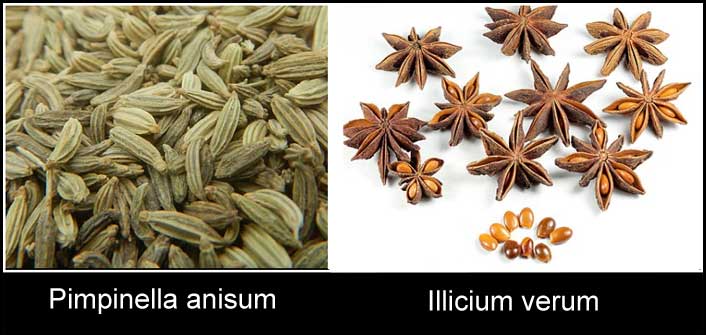Anise herb
Anise takes the chill out of your body in cold weather and relaxes tired muscles. It improves digestion and relieves headache pain when used in aromatherapy. Read on to find a good recipe and directions for making anise ointment.

Using anise in herbal medicine, home remedies, and aromatherapy
Anise lends its flavor to licorice candy. Licorice is naturally sweet, but the unique flavor of licorice candy comes from anise.
Anise is used in many herbal products especially essential oils and extracts.
Anise oil is often added to herbal cough lozenges, perfumes, cosmetics, toothpastes, massage oils, and natural insect repellents.
Anise warms the body and clears the mind, helping to naturally bring clarity and focus.

There are two herbs commonly known as anise.
Anise (Pimpinella anisum) plants look like dill and are related to parsley. They are sometimes confused with fennel.
Star anise (Illicium verum) is a fruit that grows on an evergreen tree related to magnolias.
The unrelated plants contain the same flavor compound, a substance called anethole. As far as I can tell, the two types of "anise" are used interchangeably in culinary and medicinal recipes.
To make things even more confusing, there is an herb called anise hyssop (Agastache) and one just known as hyssop (hyssopus).
Latin names are not written in stone. Plants names change when they are "reclassified" due to new discoveries. Also, in old texts, plant names are often regional. For example, yellowroot in the Appalachian Mountains is a small shrubby plant that grows on creek banks. In India, yellowroot is another name for turmeric.
A fine essential oil is produced from anise.
Anise essential oil has many uses. Mix it with eucalyptus essential oil and a good carrier oil like almond oil to use as a natural chest rub when treating coughs. Read more about treating coughs with herbs.
Anise is good for the respiratory system, and also helps relax tired muscles. Use anise essential oil with a good carrier oil in massage to warm the body and ease muscle pain after overdoing it.
Anise ointment recipe
Anise makes an excellent addition to arthritis and muscle pain ointment. You will need beeswax, cold pressed carrier oil like olive oil, and anise essential oil plus a heat source and basic kitchen utensils.
- To make anise ointment, melt a tablespoon of grated or chopped beeswax with with three tablespoons of carrier oil over low heat.
- Remove from heat as soon as the wax melts.
- While mixture is still warm add a 6 to 8 drops of anise essential oil and stir well.
- Add a few drops of eucalyptus, frankincense, peppermint, ginger, wintergreen, or rosemary essential oil for extra strength.
- Use immediately or store in a small, tightly covered jar in the refrigerator. It should keep for weeks in the refrigerator.
- Discard if mold appears or scent becomes rancid. This ointment does not contain preservatives!
To use any pain ointment or muscle rub, apply in gentle, circular motions, and test on a small area of skin before using on a larger areas.
Anise seeds
Studies show that anise seeds (Pimpinella anisum) have antimicrobial, antifungal, antiviral, antioxidant, muscle relaxant, analgesic, and anticonvulsant properties. If you don't know what these terms mean, see my herbal property glossary.
These potent seeds can help the digestion system and relieve colic in small children. They also increase milk production in nursing mothers. Anise seeds are effective against hot flashes in menopausal women.
Anise is also used in the treatment of ulcers, nausea, constipation, and addiction, especially in cases of morphine dependency.
A long history
Anise seeds have been used for centuries in the Middle East. They are used for polishing the teeth, and also for treating seizures, epilepsy, nightmares, and depression.
*Always consult with your healthcare professional before using any herbal remedy especially if pregnant, nursing, or taking other medications.
Sources:
https://www.ncbi.nlm.nih.gov/pmc/articles/PMC3405664/
https://en.wikipedia.org/wiki/GABAergic
Blessings to you and yours!
Thanks so much for reading my blog. Jan.

*Note - the information on this website has not been evaluated by the Food and Drug Administration.
© 2005-2024 website design and content by Janice Boling